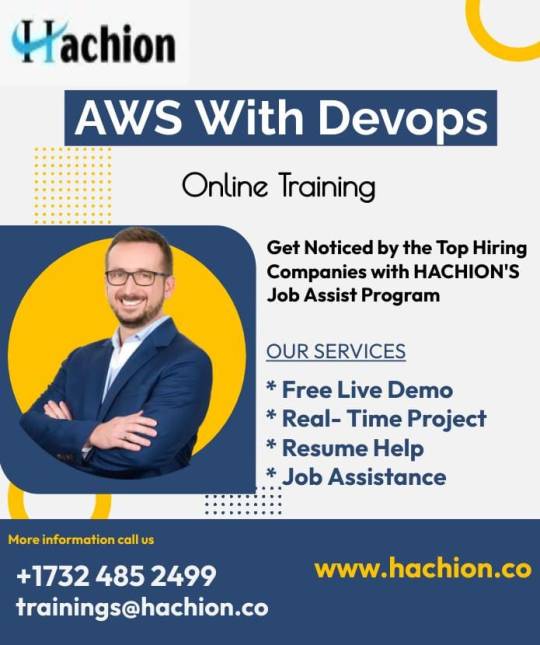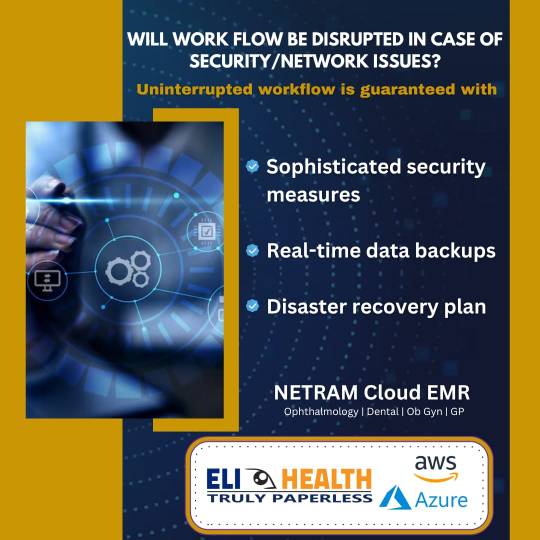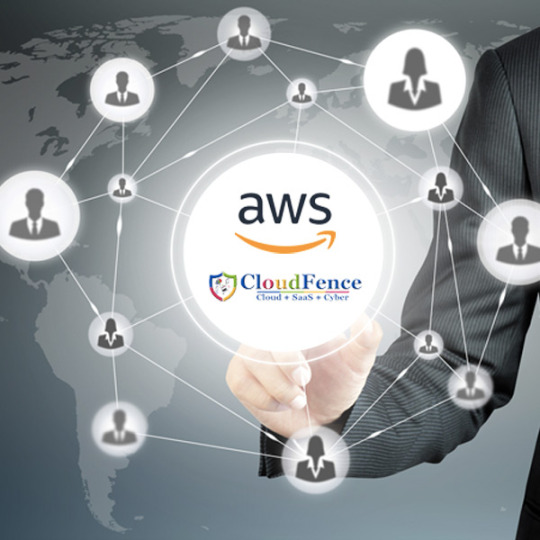#AWSServices
Text
Get Started with IBM Event Automation on AWS Marketplace

Businesses can expedite their event-driven initiatives, no matter where they are in their journey, with IBM Event Automation, a completely composable solution. Unlocking the value of events requires an event-driven architecture, which is made possible by the event streams, event processing capabilities, and event endpoint management.
IBM Event Automation
The volume of data generated in an organisation is increasing at an exponential rate due to the hundreds of events that take place there. Imagine being able to access these continuous information streams, make connections between seemingly unrelated occurrences, and identify emerging patterns, client problems, or threats from competitors as they arise.
IBM Event Automation has the following features:
Event Streams: Use enterprise-grade Apache Kafka to gather and disseminate raw streams of business events occurring in real time. With a single, integrated interface, manage your Apache Kafka deployments, balance workloads, browse messages, and keep an eye on important metrics. Utilise the Kafka Connect framework to link easily with hundreds of popular endpoints, such as IBM MQ, SAP, and more.
Event Endpoint Management: Enable control and governance while encouraging the sharing and repurposing of your event sources. With ease, describe and record your events using the AsyncAPI specification, which is available as open source. Provide a self-service event source catalogue that users can peruse, use, and distribute. Using an event gateway, enforce runtime restrictions to protect and manage access to anything that can talk the Kafka protocol.
Event Processing: Create and test stream processing flows in real time using an easy-to-use authoring canvas by utilising the power of Apache Flink. At each stage, receive support and validation as you filter, collect, alter, and connect streams of events. Give business and IT users the tools they need to create business scenarios, recognise them when they happen, and take immediate action.
Information on Prices
Below are the total costs for these different subscription durations.
Additional taxes or fees may apply.UnitsDescription12 MONTHSIBM Event Automation VPCsEntitlement to IBM Event Automation VPCs$3,396
Information on Usage
Fulfilment Options
SaaS, or software as a service
A software distribution paradigm known as “software as a service” involves the vendor hosting and managing the program online. Consumers do not own the underlying infrastructure; they only pay to use the software. Customers will pay for consumption through their AWS payment when using SaaS Contracts.
End-User License Contract
You accept the terms and conditions stated in the product’s End User License Agreement (EULA) by subscribing to this product.
Supporting Details
Software: IBM Event Automation
A benefit of IBM Event Automation is having access to IBM Support, which is offered everywhere, around-the-clock, every day of the year. Use this link to reach IBM Support: http://www.ibm.com/mysupport
Refund Guidelines
No reimbursements without IBM’s consent
You may now get IBM Event Automation on the AWS Marketplace. This represents a major advancement in deployment flexibility and accessibility for global enterprise clients. As of right now, companies can use their current AWS Marketplace Enterprise Discount Program (EDP) funds to purchase IBM Event Automation as self-managed software. This makes it possible for companies to purchase subscription licenses using the bring your own license (BYOL) strategy.
This breakthrough creates new opportunities for enterprises looking for seamless integration of sophisticated event-driven architecture capabilities into their AWS infrastructures. IBM ensures that customers can effortlessly build and maintain event-driven software capabilities while using AWS’s massive infrastructure and worldwide reach by listing IBM Event Automation on the AWS Marketplace.
With open plans available in more than 80 countries, IBM Event Automation is accessible worldwide. Clients can still seek access to IBM Event Automation by contacting their local IBM representative, even if they do not reside in one of the 80 mentioned countries. Because of its widespread availability, companies of all shapes and sizes can take use of its potential to successfully optimise their event management procedures. Clients can maximise their AWS budget under the BYOL subscription model by utilising their current IBM Event Automation licenses. This strategy aligns with cost optimisation initiatives and lowers upfront expenditures.
The ability to seamlessly integrate with other AWS services is made possible by hosting on the AWS Marketplace. This improves operational efficiency and gives clients access to a vast cloud ecosystem for their event-led integration requirements. AWS container environments, such Red Hat OpenShift Service on AWS (ROSA) and Amazon Elastic Kubernetes Service (EKS), can be deployed using IBM Event Automation. This containerised method is ideal for contemporary cloud-native designs since it ensures scalability, flexibility, and economical resource usage.
Customers can purchase IBM Event Automation on AWS Marketplace and install it directly in their own AWS environment, giving them more control over deployment details and customisation. Businesses planning to use the AWS Marketplace to implement IBM Event Automation should take into account a number of operational factors:
Infrastructure readiness refers to making sure the AWS environment satisfies the required security and performance standards and is ready to host containerised applications.
Licensing management: Controlling license usage to maximise cost-effectiveness, adhere to AWS Marketplace standards, and comply with IBM’s BYOL terms.
Integration and support: To expedite integration and address any operational obstacles, take advantage of IBM’s experience and AWS support services.
To sum up, the inclusion of IBM Event Automation in the AWS Marketplace is a calculated step towards providing businesses with advanced event management tools for their AWS setups. Organisations can improve cost optimisation, scalability, and operational efficiency by implementing containerised deployment choices and implementing a BYOL subscription model. Additionally, these strategies can facilitate smooth integration with AWS services. Businesses’ growing need for effective event-driven operations may be supported by IBM Event Automation on AWS Marketplace as they continue to embrace digital transformation and cloud adoption.
Read more on govindhtech.com
#GetStartedwithIBM#Automation#AWSMarketplace#usingSaaS#news#ApacheFlink#ApacheKafka#IBMEventAutomation#IBMSupport#AsyncAPIspecification#RedHatOpenShiftServiceonAWS#awsservices#technology#technews#govindhtech
0 notes
Text

AWS DevOps certification training is curated by the industrial experts to help you develop your skills both in AWS and DevOps. The training will make you an expert in various on-demand aspects of AWS DevOps.Join our Aws with Devops online class and learn from experienced and professional trainers. Contact us to join.
Enroll Here: https://forms.gle/koro1o6hBQyrvCvz7



Mock interview sessions
Contact info:
Call: +1 732-485-2499
Email: [email protected] | WhatsApp: https://wa.me/17324852499
#hachion#awswithdevops#devops#aws#AWS_Online_training#AWS#onlinetraining#onlinecourse#awsservices#AWSSolutionArchitect#AWSonlinetraining#trainingvideos#onlineclasses#onlinecourses#usa
0 notes
Text

#clouddatabackup#disasterrecovery#datatheft#databreach#netramemr#emrdatasecurity#ophthalmologyemr#awsservices#specialityemroncloud#cloudemr#thirdpartysoftwareintegration#olddatamigration#oldrecordintegration#paperrecordintegration#billingsoftwareintegration#accountingsoftwareintegration
0 notes
Video
youtube
A Complete Overview of Top 10 AWS Services 2023 - With AWS's extensive service catalog, making the right choices is crucial. Our video introduces you to the top 10 AWS services 2023, equipping you with the knowledge to make informed decisions and prevent any project-related confusion.
0 notes
Text

Visit #jaiinfoway http://jaiinfoway.com for "Unleash the Future of Business with JaiInfoway's Tailored AWS Services!"
#JaiInfowayAWS#CloudComputing#AWSServices#EC2Power#S3Storage#KinesisAnalytics#CloudMigration#CloudOptimization#SecureCloud#BusinessInnovation
0 notes
Text
Take your Business to Cloud with our Managed AWS Services
Our managed AWS cloud hosting helps DevOps, Businesses, Agencies and E-commerce platforms build & deploy their applications in a secure, scalable and cost effective manner.
Whether its a Django Application or a PHP based application, we provide hassle free and flexible deployment of AWS services with a round the clock support. Our custom deployment process and architecture is designed to help you scale your operations while keeping a check on your expenses.
Cloud Service provider that delivers cost effective and secure Managed AWS (Amazon Web Services) services to run your business on cloud with ease.
1 note
·
View note
Text

CloudFence Technologies, as an AWS Select Consulting Partner, you can trust our professionals to have deep knowledge of AWS products and offerings. Following are the reason why should consider a AWS Managed Service Providers:
Certified Professionals
Multi cloud experience
24/7/365 professional support
1 note
·
View note
Text

#ccna certification#cisco ccna#ccna course#pmp online#pmp#aws#awstraining#awsservices#aws devops services#azure training#azure synapse#pmi capm#pmp exam
0 notes
Text
Introducing the AWS Audit Manager Common Control Library

What is AWS Audit Manager?
AWS Audit Manager is a service offered by Amazon Web Services (AWS) that simplifies managing risk and compliance with regulations and industry standards for your AWS usage. It does this by automating the process of collecting evidence to see if your security controls are working effectively.
Audit your AWS usage frequently to streamline the risk and compliance assessment process.
Audit Manager AWS
How it functions
Map your compliance requirements to AWS usage data using prebuilt and bespoke frameworks and automated evidence collection with AWS Audit Manager.Image credit to AWS
Use cases
Shift evidence collection from manual to automated
Automated evidence collecting eliminates the need for manual evidence gathering, evaluation, and management.
Audit continuously to evaluate compliance
Gather data automatically, keep an eye on your compliance position, and adjust your controls proactively to lower risk.
Implement internal risk evaluations
Create your own custom modifications to an existing framework, then initiate an assessment to gather data automatically.
You may continuously audit your AWS consumption as part of your risk and compliance assessment by mapping your compliance criteria to AWS usage data with AWS Audit Manager. A common control library that offers common controls with predefined and pre-mapped AWS data sources is being introduced by Audit Manager today.
The rigorous mapping and assessments carried out by AWS certified auditors, which confirm that the right data sources are identified for evidence collection, form the foundation of the shared control library. In order to reduce their reliance on information technology (IT) teams, Governance, Risk, and Compliance (GRC) teams can map corporate controls into AWS Audit Manager more quickly by using the common control library.
It is simpler to comprehend your audit preparedness across several frameworks at once when you use the common control library to view the compliance requirements for multiple frameworks (like PCI or HIPAA) associated with the same common control in one location. This eliminates the need for you to execute several compliance standard requirements one at a time and then repeatedly analyse the data that results for various compliance regimes.
Furthermore, as AWS Audit Manager updates or adds new data sources, such as extra AWS CloudTrail events, AWS API calls, AWS Config rules, or maps additional compliance frameworks to common controls, you instantly inherit improvements when you use controls from this library. This makes it easier to gain from new compliance frameworks that AWS Audit Manager adds to its library and reduces the labour that GRC and IT teams must perform to maintain and update evidence sources on a regular basis.
Let’s look at an example to understand how this functions in real life
Employing the common control library of AWS Audit Manager
An airline will frequently set up a policy requiring all customer payments, including those for in-flight food and internet access, to be made using a credit card. The airline creates an enterprise control for IT operations stating that “customer transactions data is always available” in order to carry out this policy. How can businesses keep an eye on whether their AWS applications comply with this new requirement?
Danilo Poccia launch the AWS Audit Manager console and select Control library from the menu bar in my capacity as their compliance officer. The new Common category is now part of the control library. Every common control corresponds to a set of fundamental controls that gather proof from managed data sources on AWS and facilitate the demonstration of compliance with various standards and laws that overlap. He search for the word “availability” in the common control library. He now understand how the airline’s anticipated requirements relate to common control. The library’s architecture has high availability.
He reveal the fundamental basic controls by expanding the High Availability Architecture Common Control. There, he see that because Amazon DynamoDB isn’t on this list, this control doesn’t fully satisfy all of the needs of the business. Even though DynamoDB is a fully managed database, they want their DynamoDB tables to remain accessible as their workload changes because DynamoDB is heavily utilized in their application architecture. If they set a fixed throughput for a DynamoDB table, this might not be the case.
He search for “redundancy” in the common control library once more. To illustrate how it relates to core controls, he extend the common control for fault tolerance and redundancy. He can see the core control for Enabling Auto Scaling for Amazon DynamoDB tables there. Although the airline’s architecture makes use of this core control, the entire common control is not required.
Furthermore, shared control AWS Config rule is required for the two key controls in high availability architecture, which verify that Multi-AZ replication on Amazon Relational Database Service (RDS) is enabled. Since the airline does not use AWS Config, this rule is inapplicable non this particular use instance. A CloudTrail event is also used by one of these two main controls, but it is not applicable in all circumstances.
He would like to gather the real resource configuration in my capacity as compliance officer. He have a quick conversation with an IT partner in order to get this evidence, and he use a customer-managed source to develop a custom control. To minimize expenses, he choose the api-rds_describedbinstances API call and establish a weekly collection frequency.
The compliance team can handle the implementation of the custom control with little assistance from the IT team. Instead of just choosing the core control linked to DynamoDB, the compliance team can apply the full second common control (fault tolerance and redundancy) if they need to lessen their dependency on IT. The reduction of time and effort for both the IT and compliance teams, as well as the acceleration of velocity, often outweigh the benefits of optimising the controls already in place, even though it could be more than they require given their design.
He now make a custom framework with these controls by selecting Framework library in the navigation bar. Next, he make an assessment with the custom framework by selecting Assessments from the navigation pane. AWS Audit Manager begins gathering information about the chosen AWS accounts and their AWS consumption as soon as he create the evaluation.
With an implementation in accordance with their system design and their current AWS services, a compliance team can exactly report on the enterprise control “customer transactions data is always available” by following these steps.
AWS Audit Manager Pricing
All Amazon Regions where AWS Audit Manager is accessible currently have access to the common control library. The use of the common control library is free of charge. See the price for AWS Audit Manager for further details.
Read more on Govindhtech.com
#AWS#AWSAuditManager#AWSdatasources#AWSservices#DynamoDB#news#technews#technology#technologynews#technologytrends
0 notes
Text

#clouddatabackup#disasterrecovery#datatheft#databreach#netramemr#emrdatasecurity#ophthalmologyemr#azurecomputing#awsservices#specialityemroncloud#cloudemr#thirdpartysoftwareintegration#olddatamigration#oldrecordintegration#paperrecordintegration#billingsoftwareintegration#accountingsoftwareintegration
0 notes
Text

Visit #jaiinfoway www.jaiinfoway.com for Empower Your Business with Jaiinfoway's AWS Services
#cloudserviceprovider
#startupsuccess
#entrepreneurmindset
#AWSservices
#cloudmigration
#cloudarchitecture
#managedservices
#cloudcomputing
#businesssolutions
#digitaltransformation
#ITconsulting
#cloudtechnolog
#microservices#cloudserviceprovider#startupsuccess#entrepreneurmindset#AWSservices#cloudmigration#cloudarchitecture#managedservices#cloudcomputing#businesssolutions#digitaltransformation#ITconsulting#cloudtechnolog
0 notes
Text
CLOUD DEVELOPMENT COMPANY
Top-notch developers with deep experience provide full-cycle custom cloud solutions, including cloud infrastructure setup, cloud application development services, cloud platforms, quality assurance, maintenance, and support.
#cloud computing#awsservices#aws#shopify plus agency#shopify agency#ecommerce#shopify#shopifyagency#technology
0 notes
Link
#aws#awscourse#awsservices#aws security#aws security training#training#online training#corporate#corporate training
0 notes
Text
AWS CodeArtifact: Secure Your Software Supply Chain

AWS CodeArtifact Documentation
CodeArtifact
AWS CodeArtifact is now available for Ruby developers to safely store and retrieve their gems. CodeArtifact is compatible with bundler and gem, two common developer tools.
Numerous packages are frequently used by applications to expedite development by offering reusable code for frequent tasks including data manipulation, network access, and cryptography. In order to access distant services, developers can also include SDKs, such the AWS SDKs. These packages could originate from outside sources like open source initiatives or from other departments inside your company. The management of dependencies and packages is essential to software development. Ruby developers commonly utilise gem and bundler, although other languages such as Java, C#, JavaScript, Swift, and Python have tools for fetching and resolving dependencies.
Nevertheless, there are security and legal issues when employing third-party software. It is imperative for organisations to verify that package licences align with their projects and do not infringe against intellectual property rights. It is imperative that they confirm the safety of the supplied code and rule out any potential vulnerabilities that could lead to a supply chain assault. Organisations usually employ private package servers to overcome these issues. Only packages approved by legal and security departments and accessible through private repositories may be used by developers.
With the managed service AWS CodeArtifact, packages may be safely distributed to internal development teams without requiring infrastructure management. In addition to npm, PyPI, Maven, NuGet, SwiftPM, and generic formats, CodeArtifact now supports Ruby gems.
Using already-existing technologies like gem and bundler, you may publish and download Ruby gem dependencies from your CodeArtifact repository on the AWS Cloud. Packages can be referenced in your Gemfile after being stored in AWS CodeArtifact. During the build process, your build system will then download approved packages from the CodeArtifact repository.
Keep and distribute artefacts among accounts, granting your teams and building systems the proper amount of access. Use a fully managed service to cut down on the overhead associated with setting up and maintaining an artefact server or infrastructure. Pay as you go for software packages, requests performed, and data moved outside of the region; you only pay for what you use.
How AWS CodeArtifacts functions
Using well-known package managers and build tools like Maven, Gradle, npm, Yarn, Twine, pip, NuGet, and SwiftPM, you may save artefacts using AWS CodeArtifact. To give you access to the most recent iterations of application dependencies, AWS CodeArtifact has the capability to automatically fetch software packages from public package repositories on demand.
Features of AWS CodeArtifacts
Any size organisation can securely store, publish, and distribute software packages used in software development with AWS CodeArtifact, a fully managed artefact repository service.
Consume public artefact repository packages
With a few clicks, CodeArtifact may be configured to retrieve software packages from public repositories like NuGet.org, Maven Central, PyPI, and the npm Registry. Your developers and CI/CD systems can always get the application dependencies they need since CodeArtifact automatically downloads and saves them from these repositories.
Release and distribute packages
You can publish packages created within your company using the package managers you already have, such npm, pip, yarn, twine, Maven, NuGet, and SwiftPM. Instead of building their own packages, development teams can save time by fetching packages published to and shared in a single organisational repository.
Approve a package’s use and observe its use
CodeArtifact APIs and AWS EventBridge can be used to create automated procedures that approve packages for use. By integrating with AWS CloudTrail, leaders can easily discover packages that require updating or removal by having visibility into which packages are being used and where.
High availability and robustness
AWS CodeArtifact uses Amazon S3 and Amazon DynamoDB to store artefact data and metadata, and it functions in different Availability Zones. Your encrypted data is extremely available and highly durable since it is redundantly stored across many facilities and various devices inside each facility.
Make use of a completely managed service
With CodeArtifact, you can concentrate on providing for your clients rather than setting up and managing your development environment. A highly available solution that can grow to accommodate any software development team’s demands is CodeArtifact. There are no servers to maintain or software updates to do.
Turn on monitoring and access control
Amazon CodeArtifact gives you visibility into who has access to your software packages and control over who can access them thanks to its integrations with AWS CloudTrail and IAM. For package encryption, CodeArtifact additionally interfaces with AWS Key Management Service (KMS).
Package access inside a VPC
By configuring AWS CodeArtifact to use AWS PrivateLink endpoints, you can improve the security of your repositories. This prevents data from being sent over the open internet and enables devices operating within your VPC to access packages stored in CodeArtifact.
CodeArtifact Use cases
Obtain software packages whenever needed. Set up CodeArtifact to retrieve content from publicly accessible repositories, including NuGet, Maven Central, Python Package Index (PyPI), and npm Registry.
Release and distribute packages
By publishing to a central organisational repository, you can safely distribute private products throughout organisations.
Accept bundles and check use
Using CodeArtifact APIs and Amazon EventBridge, create automated review processes. AWS CloudTrail provides package visibility.
Use packages in automated builds, and publish them
Update your private packages securely with IAM and publish new versions by pulling dependencies from CodeArtifact in AWS CodeBuild.
Cost and accessibility
The CodeArtifact fees for Ruby packages are identical to those of the currently supported other package formats. Three criteria determine CodeArtifact’s billing: storage (measured in gigabytes per month), requests, and data transferred to and from other AWS regions or the internet. You can perform your continuous integration and delivery (CI/CD) operations on Amazon Elastic Compute Cloud (Amazon EC2) or AWS CodeBuild, for example, without paying for the CodeArtifact data transfer because data transfer to AWS services in the same Region is free. The information is on the pricing page as usual.
Read more on govindhtech.com
#awscodeartifact#AWS#supplychain#awscloud#AmazonS3#awsservices#news#TechNews#Technology#technologynews#technologytrends#govindhtech
0 notes